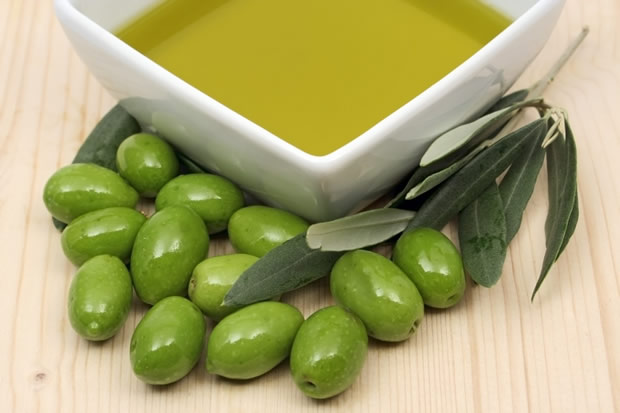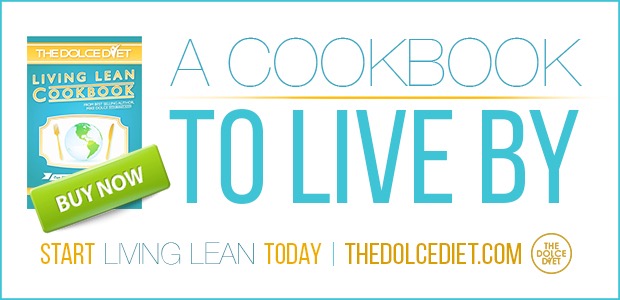How Do Popular Cooking Oils Differ?
by Samantha Wilkinson, MS, RDN, LD, Dolce Dietitian
The smoke point of cooking oils and fats is the temperature when the oil/fat breaks down and goes bad, causing thick, black smoke and sometimes a foul smell. When an oil reaches its smoke point, the oil starts to break down into fatty acids, and glycerin molecules. As the temperature continues rising, the glycerin molecules further breakdown into acrolein, an eye-irritating smoke.
According to the EPA, short-term inhalation of acrolein can lead to upper respiratory tract irritation and congestion, although not carcinogenic. Long-term exposure does not seem to produce cancer-causing effects. However, any type of smoke inhalation should be avoided whenever possible, even bonfire smoke is dangerous. And acrolein can be produced by overheating any type of fat. For example, cooking a steak to its smoke point would produce the smokey substance as well.
Along with the above health-related risks, the broken down oil can also cause foods to stick together and provide a bad taste. Knowing how hot the oil you are using can get will help you avoid the reaching the smoke point. The higher the smoke point, the better to cook with. Below is a list of the most popular oils and some benefits, associated risks and impact on health.
*You can increase the smoke point of an oil by combining it with an oil with a higher smoke point.
Canola Oil
Smoke Point: 225°F
Pros:
Less saturated fat than any other oil
Highest Alpha Linoleic Acid (ALA) content other than flaxseed oil
Cons:
Highly processed
Highly refined
Goes through process of refining, bleaching and degumming, which involve hazardous chemicals that have questionable safety standards
Must be deodorized during processing due to high Omega-3 and Omega-6 content, which becomes rancid at high temperatures during processing
Deodorization turns Omega-3’s into trans fat……big NO-NO
Impact on Health:
The human body cannot make ALA so it is especially important to include it in the diet
Over-processing makes this oil much less ideal than the others
More cons than pros
Safflower Oil
Smoke Point: 225°F
Pros:
Can help loosen phlegm
May help reduce the risk of heart disease
May be used to help treat fevers and coughs
Cons:
Used to color cosmetics and dye fabrics
Impact on Health:
Slows the rate of blood clotting, which could prove problematic if undergoing surgery and may cause excessive bleeding during the procedure (stop use 2 weeks prior to surgery)
Sunflower Oil
Smoke Point: 225°F
Pros:
Natural moisturizer
Antioxidant-rich
Can help prevent arthritis, colon cancer and asthma
Cons:
High in Omega-6’s
Spoils quickly
Impact on Health:
Optimal Omega-3 to Omega-6 ratio is 1:1 — sunflower oil is a ratio of almost 1:7
Better used for a dressing rather than cooking
Extra Virgin Olive Oil (EVOO)
Smoke Point: 320-375°F
Pros:
boosts immune system
healthy fats (MUFAs & PUFAs) may lower risk for heart disease, high cholesterol, diabetes and cancer (phytonutrient, oleocanthal, acts as an anti-inflammatory)
reduces oxidative stress and blood pressure
Cons:
high in calories due to fat content
Impact on Health:
The benefits outweigh the risks. Along with the stated benefits from above, it has been linked to reduce symptoms of rheumatoid arthritis and increases skin and hair quality.
Coconut Oil
Smoke Point: 350°F
Pros:
contain MCTs (medium-chain triglycerides) that go directly to the liver and used as a quick energy source vs. LCTs (long-chain triglycerides), which are found in most other foods
can help increase energy expenditure
lauric acid can fight off bacteria, viruses and fungi to prevent infection
appetite suppressant due to fatty acid content (help you feel fuller for longer)
Cons:
Raises good cholesterol but also raises bad cholesterol
Impact on Health:
Although it has the highest percentage of saturated fats compared to other oils, more and more studies are debunking the “artery-clogger” myths — just ask a cardiologist. Most are dismissing the American Heart Association’s stance on saturated fat as a link to heart disease.
Grapeseed Oil
Smoke Point: 420°F
Pros:
helps reduce edema, chronic venous insufficiency (swelling of veins), blood pressure, cholesterol and risk for breast, stomach, colon, prostate and lung cancer.
Cons:
While PUFAs help lower bad cholesterol, they can also lower good cholesterol
Impact on Health:
Healthy fats (PUFAs) aid in diabetic health and reduce risk for heart disease, and with its astringent properties can help tighten and tone skin, and is a great moisturizer.
*As a general rule, if the dish is cold, use olive oil (such as a dressing). If the dish is hot, use grapeseed oil (such as in sauteeing). Since grapeseed oil has a higher smoking point than olive oil, it can withstand higher cooking temperatures without reaching its smoke point, causing acrolein formation and an unpleasant kitchen experience. At just 180°F, the flavor and aroma olive oil start to breakdown, well before its smoke point. However, grapeseed oil literally will not start smoking until 420°F, and it won’t lose its flavor or aroma due to its neutrality. Keep in mind, for baking recipes that call for olive oil, it is usually for its flavor, not for its fat. So this means that you can’t necessarily swap it for grapeseed oil because it could ruin the flavor of the dish.
Peanut Oil
Smoke Point: 450°F
Pros:
Can help lower cholesterol to prevent heart disease,
Can be applied directly to skin to treat eczema and arthritis
Decreases appetite (for weight loss purposes)
Cons:
People with peanut or soybean allergies cannot use it
Impact on Health:
Contains high amounts of monounsaturated fats (MUFAs) and low amounts of saturated fats
Soybean Oil
Smoke Point: 465°F
Pros:
Low in saturated fat
High in Omega-3’s to help reduce risk of heart disease and osteoporosis
Cons:
Found in almost all processed foods
High trans fat content due to partially hydrogenated oils
Impact on Health:
Little to no aroma to allow the foods you’re cooking to maintain their flavor without being masked by the oil
Avocado Oil
Smoke Point: 520°F
Pros:
High MUFA content
Loaded with beta-caratene, protein, vitamins A, D & E
Helps control blood cholesterol due to high oleic acid (helps reduce absorption of dietary cholesterol and triglycerides) content
Alpha Linoleic Acid (ALA) can help stave off breast and colon cancers
Moisturizes skin and hair
Promotes wound healing
Cons:
Tends to be more expensive than other oils
Impact on Health:
Can be applied as a topical treatment to promote hair and skin health, or orally through cooking for multiple anti-inflammatory benefits





